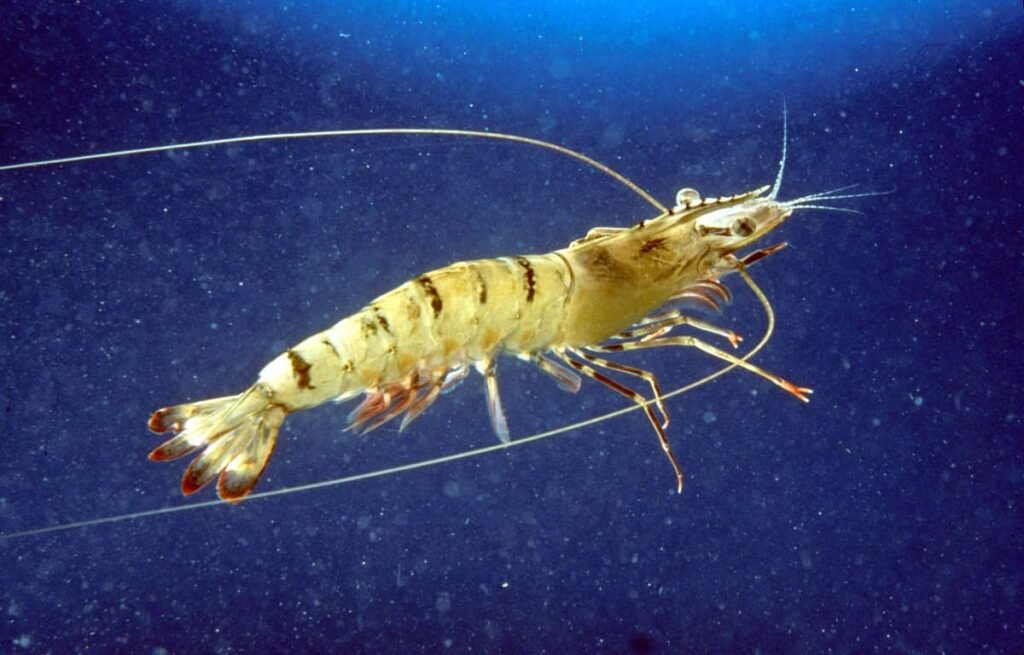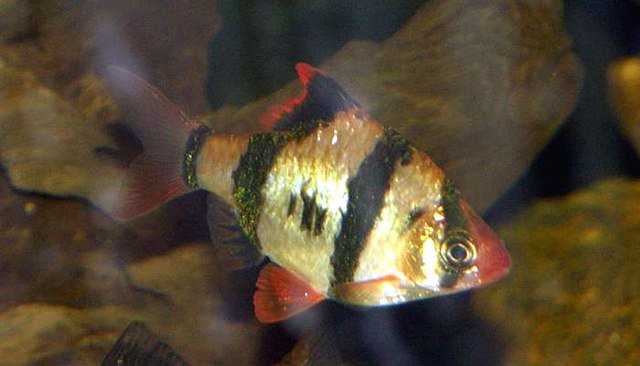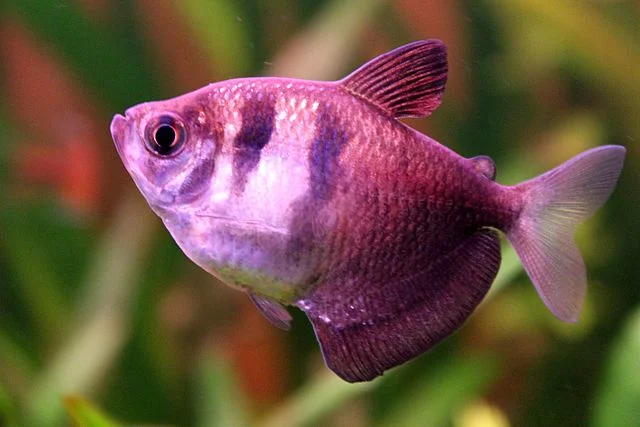
The Infectious Hypodermal and Hematopoietic Necrosis Virus (IHHNV) is one of the most well-known pathogens in the global shrimp farming industry. Listed as a notifiable disease by the World Organisation for Animal Health (WOAH), a positive result can trigger trade barriers and drastic management decisions on farms. The most widespread diagnostic method, due to its speed and sensitivity, is the polymerase chain reaction (PCR).
However, how reliable are these tests? Does a positive PCR result unequivocally mean that the shrimp are infected and that production is at risk? A recent scientific study by researchers from the National Center for Genetic Engineering and Biotechnology (BIOTEC), the Songkhla Aquatic Animal Health Research and Development Center, and Mahidol University on giant tiger prawn (Penaeus monodon) farms in Thailand sheds light on this issue, and its findings are crucial for the entire sector. The research robustly demonstrates that a single PCR test is insufficient to determine the presence of IHHNV and, more importantly, its actual impact on production.
Key findings
- 1 Key findings
- 2 The reliance on recommended PCR methods
- 3 A rigorous study under real-field conditions
- 4 A surprising rate of false positives
- 5 Why do false positives occur? The role of EVEs
- 6 Impact on production and the presence of other pathogens
- 7 Conclusion: Towards a more accurate and fair diagnosis
- 8 Entradas relacionadas:
- The study showed that the WOAH-recommended PCR methods for IHHNV generated false-positive results in 9 out of 11 (82%) of the shrimp farms analyzed.
- The presence of Endogenous Viral Elements (EVEs) in the shrimp’s genome is the most probable cause of these positive yet incorrect PCR results.
- Confirmation of an active IHHNV infection requires histopathological analysis (detection of Cowdry type A inclusions, ISH, or IHC), as multiple PCR tests alone are not conclusive.
- The studied farms, including the two with confirmed IHHNV infections, achieved profitable harvests, questioning the virus’s productive impact under current conditions.
The reliance on recommended PCR methods
For years, IHHNV diagnosis has relied on the PCR protocols recommended by WOAH, specifically the methods known as IHHNV-309 and IHHNV-389. These methods detect specific DNA sequences associated with the virus. However, practice has shown that positive results often lead to product rejection without solid confirmation that it is not a false positive.
This scenario prompted researchers to conduct a comprehensive study, which was published in the Journal of the World Aquaculture Society. The objective was clear: to evaluate the reliability of the WOAH PCR methods by comparing them with more robust diagnostic techniques and to analyze the virus’s real-world impact on commercial farms.
A rigorous study under real-field conditions
To carry out the research, the team selected 11 commercial Penaeus monodon culture ponds in Thailand. The sole selection criterion was that these ponds had already yielded positive results for IHHNV using the two WOAH-recommended PCR methods.
Three levels of analysis were applied:
- Molecular Diagnosis (PCR): In addition to the WOAH methods (IHHNV-309 and IHHNV-389), a more comprehensive in-house PCR method called “IHHNV Long-amp” (IHHNV-LA), which amplifies 90% of the virus’s genome, was used.
- Standard Histopathology (H&E): Shrimp tissues were analyzed under a microscope to look for the characteristic and pathognomonic lesions of an IHHNV infection: Cowdry type A inclusions (CAIs). This technique is considered the “gold standard” for confirmation.
- Advanced Histological Techniques: In situ hybridization (ISH) and immunohistochemistry (IHC) were employed to visually detect the virus’s genetic material and proteins directly in the affected tissues.
A surprising rate of false positives
The study’s findings were revealing and concerning. While all 11 ponds tested positive with the WOAH PCR methods, the deeper analyses told a very different story.
Stay Always Informed
Join our communities to instantly receive the most important news, reports, and analysis from the aquaculture industry.
- The IHHNV-LA Filter: Of the initial 11 ponds, only 3 showed positive results with the more exhaustive IHHNV-LA method. This already suggests that the other 8 ponds could be false positives.
- Histological Confirmation: The definitive analysis through histopathology (searching for CAIs, ISH, and IHC) was even more conclusive. Only shrimp from 2 of the 11 ponds showed actual signs of an IHHNV infection.
This means that 9 of the 11 ponds (82%) that initially tested positive with the standard WOAH methods did not actually have an active IHHNV infection. These results were classified as false positives.
Why do false positives occur? The role of EVEs
The key question is: how can a PCR test be positive if the infectious virus is not present? The answer appears to lie in Endogenous Viral Elements (EVEs).
EVEs are fragments of a virus’s genome that integrated into the shrimp’s DNA long ago. These fragments are like genetic “fossils”: they are part of the host’s genome and are inherited, but they do not produce an infectious virus. The problem is that these EVEs can have DNA sequences identical to those targeted by PCR tests (like IHHNV-309 and -389), triggering a positive signal even though no real viral threat exists. The study suggests this is the most likely explanation for the high rate of false positives.
Impact on production and the presence of other pathogens
Another fundamental finding of the study relates to IHHNV’s impact on production. Despite the PCR results, all 11 ponds, including the two with histologically confirmed infections, had profitable harvests.
In the ponds where IHHNV was confirmed, the “Runt Deformity Syndrome” (RDS) typically associated with the virus in other species was not observed. Histopathological analysis revealed that shrimp from almost all ponds had co-infections with other pathogens known to affect growth, such as hepatopancreatic parvovirus (HPV) and P. monodon nudivirus (PmNV, formerly MBV), in addition to bacterial lesions.
This enormously complicates attributing any growth problems solely to IHHNV. It would be scientifically untenable to blame IHHNV for poor performance based only on a PCR result while ignoring the presence of other pathogens.
Conclusion: Towards a more accurate and fair diagnosis
The message from this research is clear and direct: an IHHNV infection cannot be confirmed based solely on PCR tests, not even by using multiple PCR methods. Positive results must be validated by histopathological techniques (the detection of CAIs via H&E staining, ISH, or IHC) to confirm the presence of lesions and, therefore, an active infection.
The over-reliance on unvalidated PCR tests not only lacks scientific rigor but also has severe economic consequences, such as the unjustified rejection of products and the implementation of costly and unnecessary management measures. The study’s authors recommend amending the WOAH diagnostic manuals to specify this requirement for histological confirmation.
For the producer, technician, and veterinarian, this research reinforces the need for a comprehensive and critical diagnostic approach. Before making decisions based on a PCR result for IHHNV, it is essential to ask: Is it confirmed by histopathology? Are there other shrimp pathogens that could be affecting my crop? Only with answers to these questions can farm health be managed effectively and fairly.
Contact
Suparat Taengchaiyaphum
Aquatic Animal Health Research Team, Integrative Aquaculture Biotechnology Research Group, National Center for Genetic Engineering and Biotechnology (BIOTEC), National Science and Technology Development Agency (NSTDA), Bangkok, Thailand.
Email: suparat.tae@biotec.or.th
Reference (open access)
Sritunyalucksana, K., Sanguanrut, P., Srisala, J., Thawonsuwan, J., Saleetid, N., Vanichviriyakit, R., Chotwiwatthanakun, C., Flegel, T. W., & Taengchaiyaphum, S. (2025). No single PCR test is sufficient to determine parvovirus IHHNV presence in or impact on farmed shrimp production. Journal of the World Aquaculture Society, 56(4), e70046. https://doi.org/10.1111/jwas.70046
Editor at the digital magazine AquaHoy. He holds a degree in Aquaculture Biology from the National University of Santa (UNS) and a Master’s degree in Science and Innovation Management from the Polytechnic University of Valencia, with postgraduate diplomas in Business Innovation and Innovation Management. He possesses extensive experience in the aquaculture and fisheries sector, having led the Fisheries Innovation Unit of the National Program for Innovation in Fisheries and Aquaculture (PNIPA). He has served as a senior consultant in technology watch, an innovation project formulator and advisor, and a lecturer at UNS. He is a member of the Peruvian College of Biologists and was recognized by the World Aquaculture Society (WAS) in 2016 for his contribution to aquaculture.




